Is Warrior III just a way to stand funny?
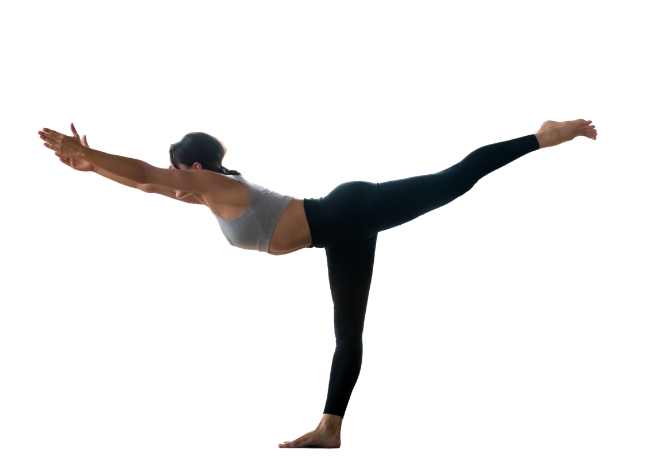
Lately, in the midst of a practice that consists mostly of standing and moving my floating ribs back, Warrior III has been suggesting itself as the next logical shape to explore – a suggestion that on the surface makes no sense at all.
Warrior III is a demanding balance. Even in preparation for certification mode, when my practice was at its strongest, I struggled with it, and mostly lost. But here it is, waving its hand in the air, tugging at me to just give it a try.
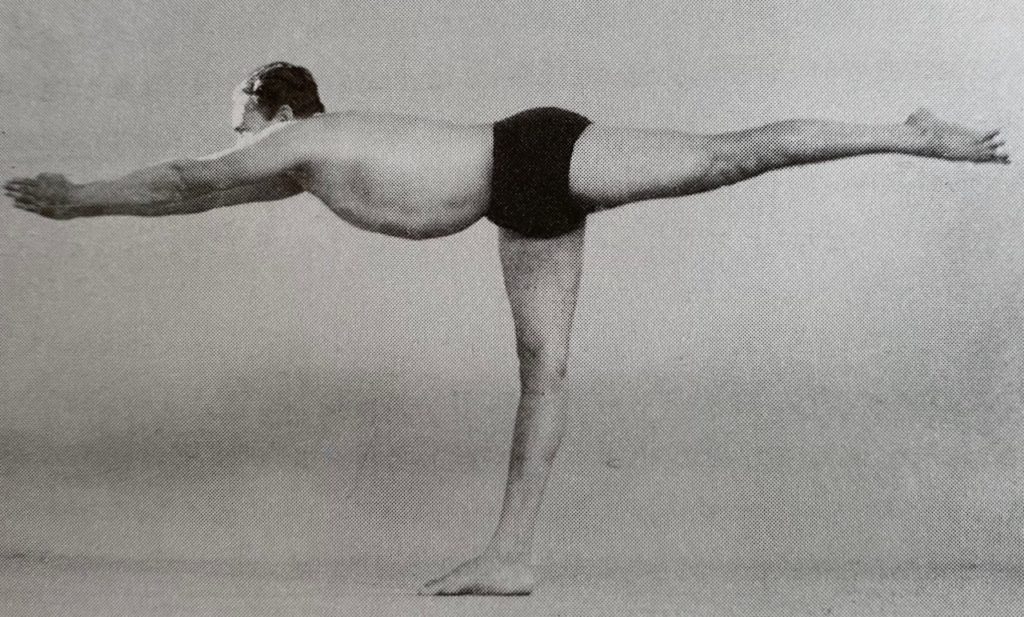
When I find myself curious about a yoga pose, I reach for Light on Yoga, BKS Iyengar’s classic guide. Imagine my surprise when I opened the book to Warrior III and read this under “Effects”: “All the movements of this asana improve one’s bearing and carriage.”
I am constantly on the lookout to improve my bearing and carriage, so I turned the photo sideways to see how it looked. The answer: as though Iyengar were standing in natural balance, albeit with his arms and legs in rather strange positions.
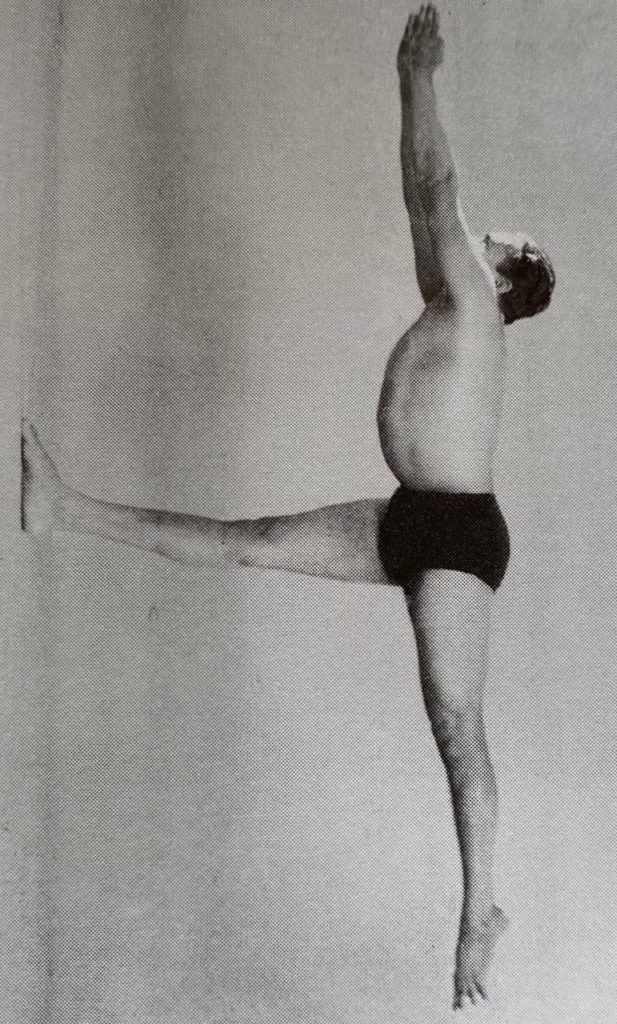
Check the line of his spine. There is a short, sharp indentation just above his buttocks, then his spine extends in a long straight line to the back of his neck. The depth of his chest makes it harder to read his front body. But look closely and you’ll see that his belly is tucked up – as it needs to be to support his spine.
For comparison, I rounded up a few other images of Warrior III as it appears in popular yoga culture. I chose the photo at the top for its overly curved back. The one below looks like my experience of the pose as a losing battle against gravity.
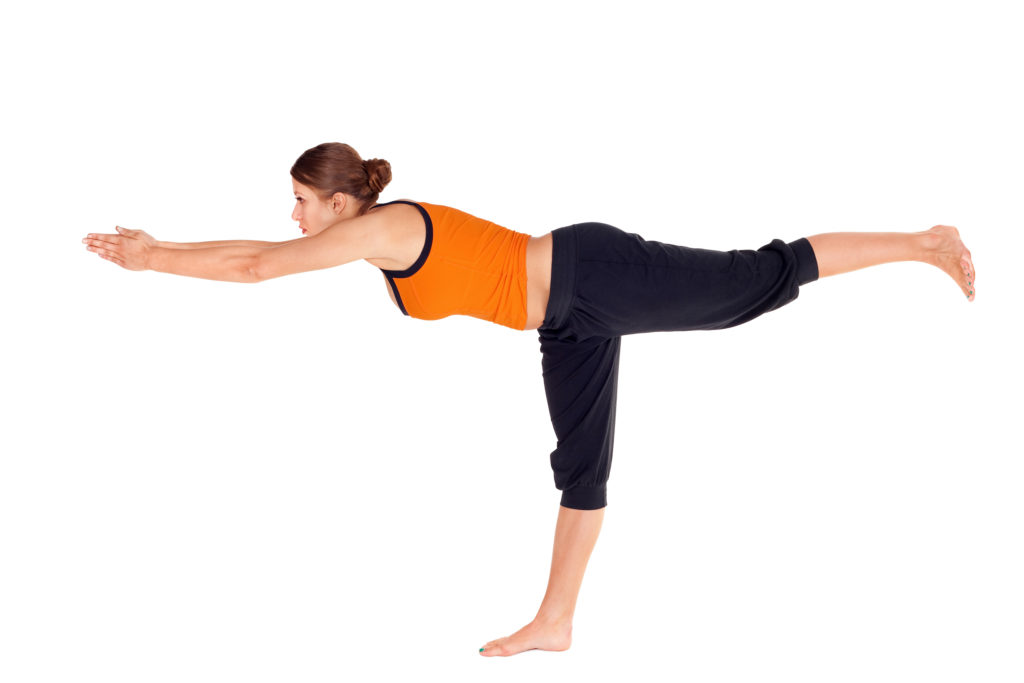
Finally, I chose one that seems close to Iyengar’s pose in form, but not in tone. She’s holding the pose. From the relaxed quality of Iyengar’s muscles, it looks like the pose is holding him.
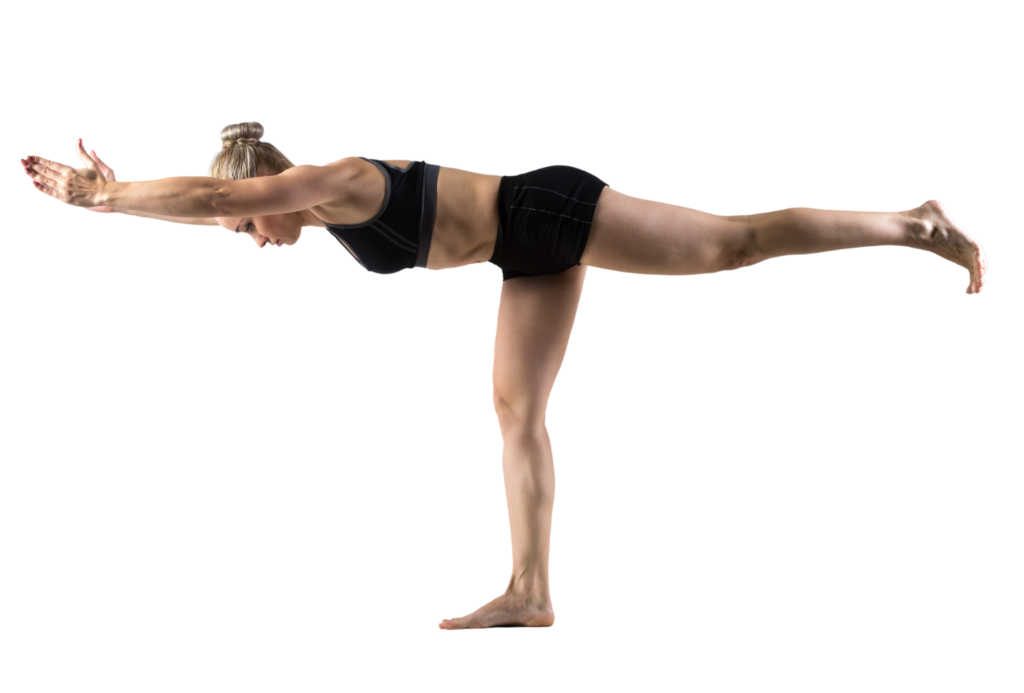
Then I turned them all on their sides.
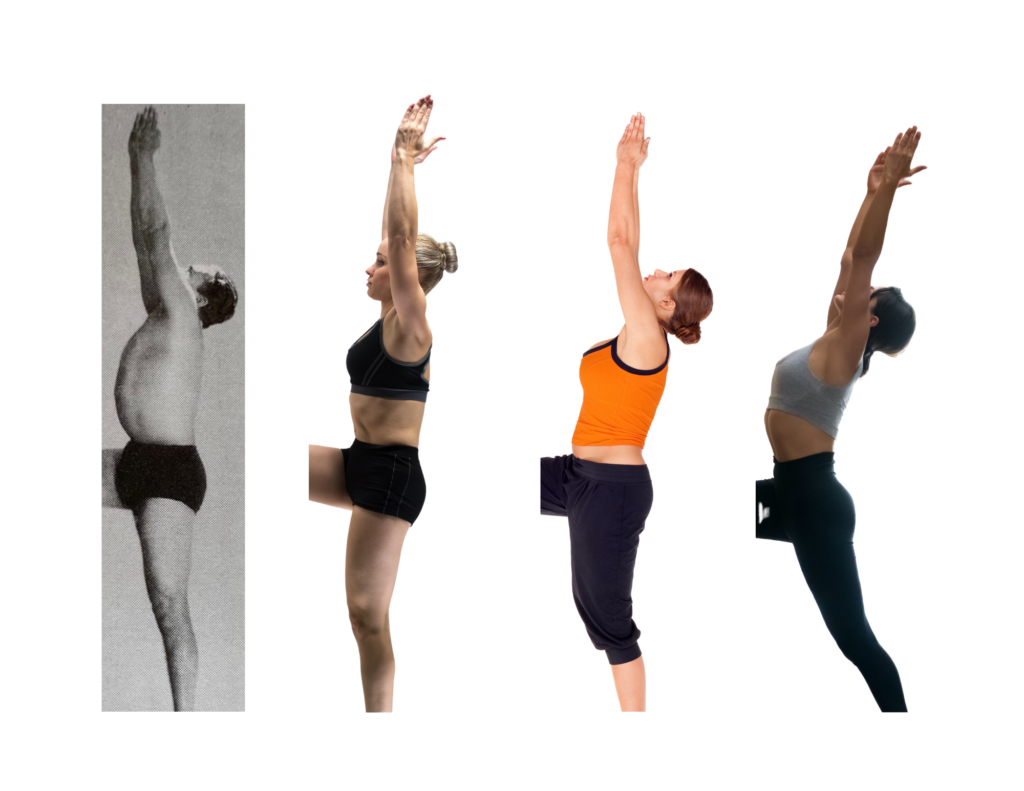
Each one of them leans back, to a greater or lesser degree, shifting their body weight forward, off the axis.
The woman in the black two-piece, whose pose most resembles Iyengar’s, is tucking her buttocks. Her front thigh moves forward and her body leans back. This is the result of the cue most often heard as “lengthen your buttocks toward the floor” or “lift the front of your pelvis.” Superficially, these actions seem to solve the problem of a too-deep lumbar curve. But with her buttocks drawn down, her pelvis is tilted backwards, off balance. That creates strain in her lower back, and throughout her body.
Finally, I remembered that Sparks of Divinity, the collection Noelle Perez made of notable things Iyengar said during his early years of teaching, contains a photo of Noelle in Warrior III.
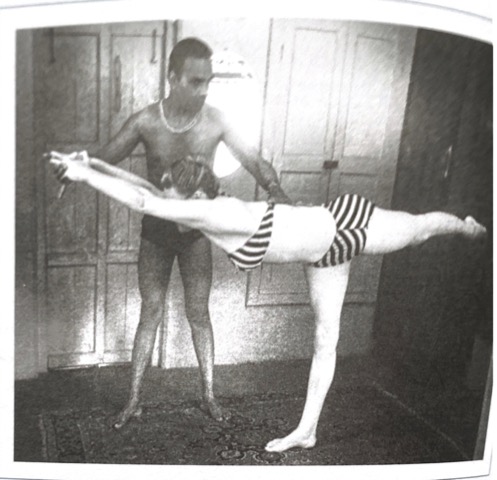
What I hadn’t remembered is that Iyengar has one hand on Noelle’s floating ribs – just the spot where our work in Balance/Spinefulness is concentrated at the moment.
And when I turn the photo sideways, she’s in the same powerful standing position as Iyengar’s in Light on Yoga.
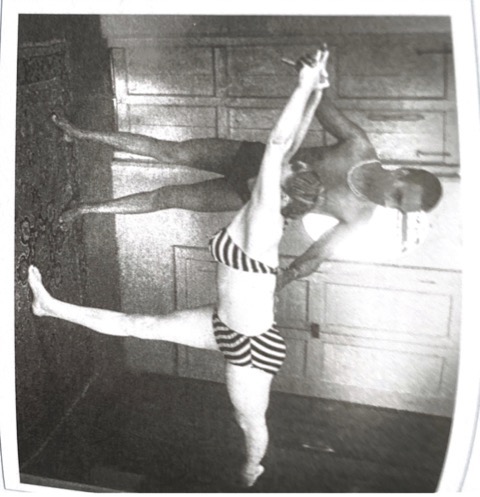
So in my modest way, I tried it. Keeping my chin to my throat, my floating ribs back, and my front chest sinking as my arms lifted, I gave it a go.
It was intense. I don’t think I lasted more than a minute, and I may not have lifted my back foot more than a couple of inches from the floor. But in that minute, I had a new sensation. My engaged core was the centre of balance in the pose. I could feel it rotating over the thighbone of my standing leg. I had always seen the arms and legs as supporting the work of the spine. Now the base of my spine radiated strength out towards my arms and legs. But the big payoff was still to come.
Second side finished, I stood for a moment and relaxed. My weight shifted to the back of my heels. My lower back and abdomen compacted towards each other, creating a kind of internal corset. And I could feel tension draining out of my upper back, neck and shoulders.
My carriage and bearing had definitely improved.
Since then I’ve completed 28 unbroken days of doing a Warrior III practice. It’s never long. Two minutes is probably a generous estimate of the time I spend. But since the rest of my day includes infinite possibilities to work with the same prompts – chin to throat, floating ribs back – I regard my brief moments of attempting Warrior III as more a supplement than a core practice.
I don’t any longer aspire to look like the picture in Light on Yoga. I’m more interested in feeling like the picture in Light on Yoga, and in seeing just how much it might improve my carriage and bearing.
6 comments on “Is Warrior III just a way to stand funny?”
Thanks for this spot-on analysis of Vira III and for introducing me to the work of Noelle Perez-Christiaens. Fascinating stuff for an
ever-beginning student of Iyengar methodology!
Barry, welcome to the world of Aplomb/Balance/Spinefulness. You’re going to love it. And isn’t it great to finally know more about that woman in the striped bikini in Light on Yoga?
What a stunning exhibit, Eve. Your years as a yoga teacher give a lot of depth to your teaching.
I will share some of my experience soon via email.
Thea, thank you! I’m so glad you enjoyed it. Looking forward to your email.
♥️
🙏
Comments are closed.